Black and white trademarks: Dare to use in white and black

Which variations of use are authorised for figurative trademarks, especially ones registered in black and white? A recent EUIPO ruling has helped to illustrate what constitutes a “permissible variation”, as Marianne Tissot explains.
Any trademark that is not “in use” is vulnerable to cancellation (revocation) actions on the grounds of non-use. Such use must be faithful to the form in which the mark has been registered. It can also be in a form which only differs in elements that do not alter its distinctive character; in other words, its essential characteristics. In practice, there is some tolerance allowing validation of use in a modified form in comparison to the registered sign, within the limit, however, that the overall modified sign can be considered equivalent to the registered one. This theory is called “the law of authorised variations”.
Is an inversion of contrasts or colours of a registered trademark permitted?
The Second Board of Appeal of the European IP Office (EUIPO) confirmed in its decision from March 10, 2023, that the use of a logo representing two white chevrons on a black background (pictured below, left) constituted valid trademark use of the registered figurative mark, composed of two black chevrons on a white background (pictured below, right).
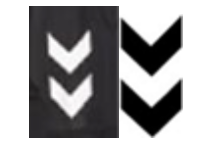
The facts of the case
Hummel Holding A/S is the holder of international registration No 915962, designating the EU for the above-mentioned figurative mark, which it had registered in 2006 for various goods and services in classes 3, 18, 25, 28 and 35.
Barry's Bootcamp Holdings, LLC filed a request for revocation at the EUIPO on the grounds of non-use of this mark for all the designated goods and services.
EUIPO’s Cancellation Division partially rejected the request for revocation, considering that Hummel had clearly demonstrated trademark use. This evidence, which was numerous, included representations of the mark on a white background (as registered) and on a black background (different use of the registration), as pictured below.
Use as registered:
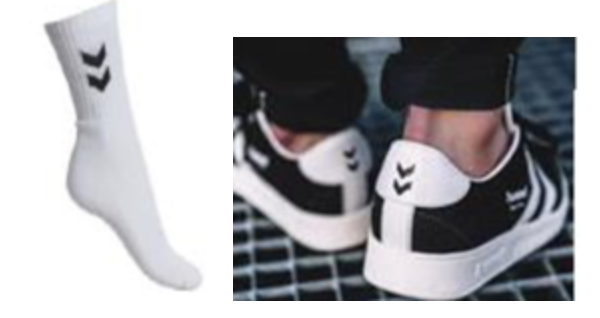
Variation:
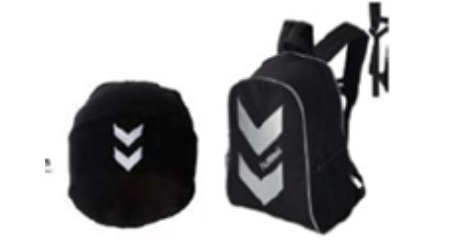
Barry's Bootcamp appealed this decision, arguing that a large amount of the evidence featured the representation of the mark in an inverted form (white on a black background). Given the low degree of distinctiveness of the sign, it argued that this difference in exploitation was likely to alter the distinctive character of the registered mark and, therefore, render it invalid.
In particular, Barry’s Bootcamp invoked the 2019 Adidas ‘three stripes’ judgement by the EU General Court, which held that Adidas's use of its trademark (registered in black on a white background, pictured left) in an inverted colour form (pictured right) was a significant variation, likely to alter its distinctive character.
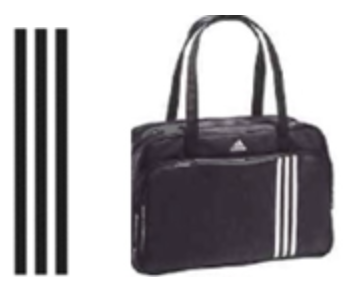
In the Adidas case, the mark in question was described as "extremely simple", in that the sign had relatively "few characteristics", consisting of three parallel black lines in a rectangular configuration on a white background. Therefore, "given the extreme simplicity of the mark at issue, even a slight variation could produce a significant alteration to the characteristics of the mark as registered/”
It should be noted that the Adidas judgement considered causes of absolute invalidity and distinctive character acquired through use. It also refers to significant variations of the mark as used from the mark as registered.
In Barry’s Bootcamp v Hummel Holding, the Board of Appeal adopted a different solution, noting that the mark in question:
- has sui generis distinctive character at the time of registration;
- is not “extremely simple” in that chevrons are not basic geometric shapes and can be represented in multiple ways.
Next, the Board of Appeal specified why the colour inversion does not alter the distinctive character of the mark, finding that the exploited sign, in fact, retains its shape, contour and proportions. The variant of the mark as used is therefore largely equivalent to the registered mark.
In its decision, the Court also cited the Common Communication on the Common Practice of the Scope of Protection of Black and White Marks from April 2014. This communication specifies that a single change of colour does not alter the distinctive character of a black and white trademark provided that:
- the verbal and figurative elements coincide and constitute the main distinctive elements of the brand;
- the contrast of colours is respected;
- the colour or colour combination does not have any distinctive character in itself; and
- colour is not one of the main elements contributing to the overall distinctiveness of the brand.
In this case, all the criteria are respected; in particular, respect for the contrast which allows the public to clearly recognise the mark, making it possible to conclude that the proof of use of the sign with the colours inverted constitutes valid proof of use of the registered black and white trademark.
Supporting case law
The Board of Appeal notably relied on a number of previous decisions, in which the use of signs in a form different from the registration was considered not to alter the distinctive character of the registered mark:
- Registered trademark (left), use in modified forms (centre/right) (Judgement of the EU General Court from October 2019)

- Registered trademark (left), use in modified form (right) (EUIPO Board of Appeal judgement dated September 2019)

Reference was also made to a November 2020 decision involving the company Hummel, in which the Boards of Appeal admitted the admissibility of evidence (and therefore of use) representing a figurative element in the form of a chevron, in all kinds of colours (example pictured left), differing from those of the registered trademarks in black (pictured right).
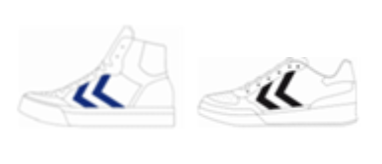
Key takeaways
In conclusion, we can take away from this decision a new and useful illustration of the applicable case law regarding trademark use in a form different from its registration.
A certain tolerance is granted to trademark holders, allowing them to adapt the use of their registered trademark to the marketing and promotion requirements of the products or services concerned, but the fact remains that the sign must retain its DNA and that these variations must not alter its distinctive character.
To find out more about permitted trademark use of your black and white trademarks or for any questions relating to registration and protection of your IP, speak to your Novagraaf attorney or contact us below.
Marianne Tissot is a French and European Trademark Attorney based in Novagraaf’s Paris office.